Sado’s oldest placer gold mine presumably recorded in a medieval anthology
“Tales of Times Now Past,” a collection of tales complied in the 12th century, states that placer gold was extracted on Sado Island. The site is believed to be Nishimikawa Placer Gold Mine located in the southwestern part of the island, suggesting that the mine is the oldest on Sado. Uesugi Kagekatsu, a warlord of Echigo Province (present Niigata region), who took over the reigns of Sado in 1589, redeveloped the Nishimikawa Placer Gold Mine. He offered the placer gold that was mined around 1593 to Toyotomi Hideyoshi, who held supremacy in Japan at that time. Around that time, Oyamazumi-jinja Shrine was built to pray for the safety and prosperity of mines.
In the latter half of the 16th century, the Sasagawa Junachi-mai (now the Sasagawa Settlement) was formed by the merger of two settlements: one was “Kinzan (Juhachi-mai)”, where 18 pieces of placer gold was paid for the monthly tax payment, and the other was “Sasagawa”. Mai was a unit used to measure the production of gold and silver, and 18 mai was equivalent to 2.9 kilograms. The village flourished and became so prosperous that it was commonly called Sasagawa Juhachimai-mura (lit. ‘Sasagawa 18 pieces Village’). In Nishimikawa, the mountain slopes containing placer gold were scraped, and unwanted stones and dirt were washed away with large amounts of water to collect placer gold with panning boards. This was called “Onagashi” (great flow) method. To supply the vast amount of water needed for “Onagashi”, numerous waterways were constructed in the surrounding area, some extending over 9 kilometers at the longest.
After the Tokugawa Shogunate came to power, Sado Magistrate’s Office was established in Aikawa in 1603. The Nishimikawa Placer Gold Mine was positioned as an important mine and Nishimikawa Mine Officials were dispatched from the Magistrate’s Office. Placer gold mining continued under its direct control. Later, however, the output declined gradually, and the mine was closed in 1872.
Subsequently, mine workers changed their means of livelihood to agriculture and forestry, and their descendants still live in the area today. Currently, the mountains with traces of placer gold mining and the remains of the waterways around the settlements are still well preserved, and the landscape is almost unchanged from that depicted in the drawings from the Edo period.
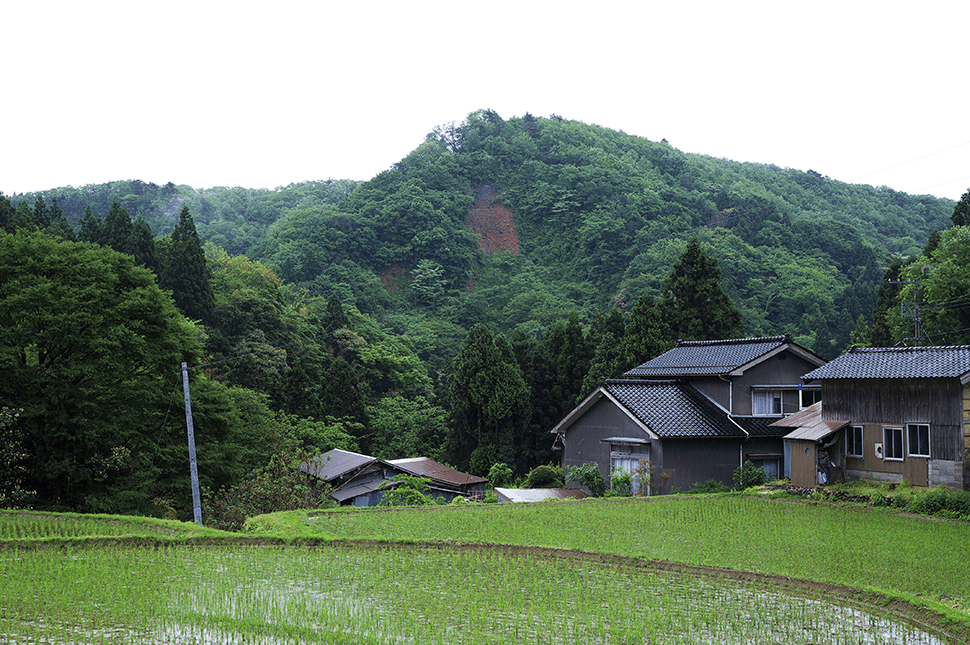
Toramaru-yama(Photo by Nishiyama Hoichi)
Toramaru-yama
This is the largest mining site in the Nishimikawa Placer Gold Mine. The strata of the mountainside that were scraped for panning placer gold are still devoid of vegetation, exposing the red surface of the mountains. (National Historic Site/Important Cultural Landscape)
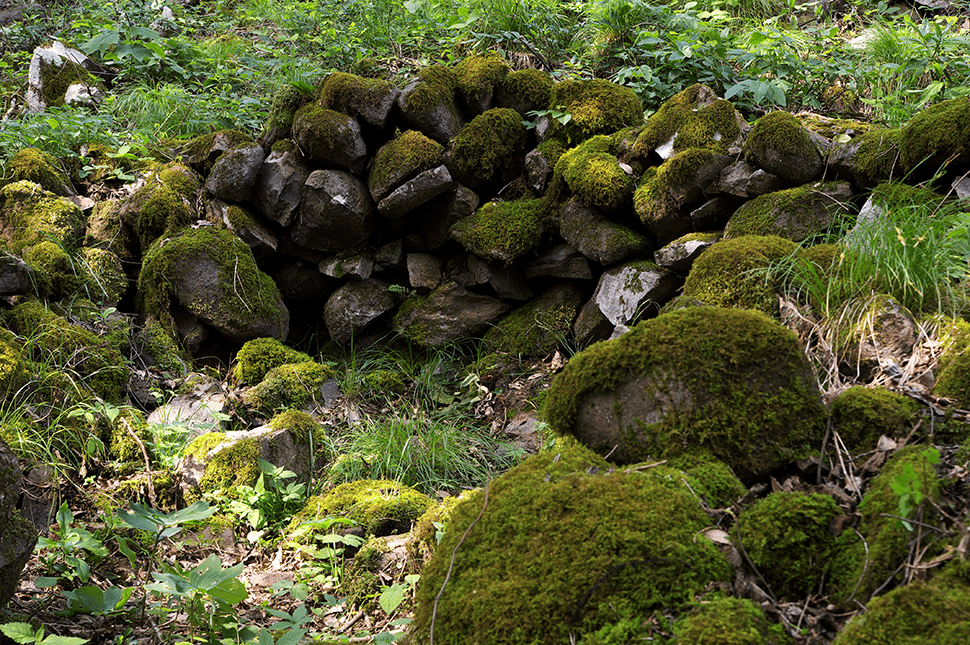
Piled-up stone structures at Goshaya-yama(Photo by Nishiyama Hoichi)
Piled-up stone structures at Goshaya-yama
Goshaya-yama is one of the sites where placer gold was extracted using the “Onagashi” (great flow) method. As there has been no development here since around 1872, when operations were stopped, the mining sites, reservoirs and waterways, and the piled-up stone structures remain in good condition. This piled-up stone structure is depicted as a blacksmith’s workshop in surviving picture scrolls. It is thought that the workers covered a roof over it and used the space for rest or as a workshop for maintenance of the mining tools. They are important historical sites that provide insight into how placer gold was collected in the past. (National Historic Site/Important Cultural Landscape)
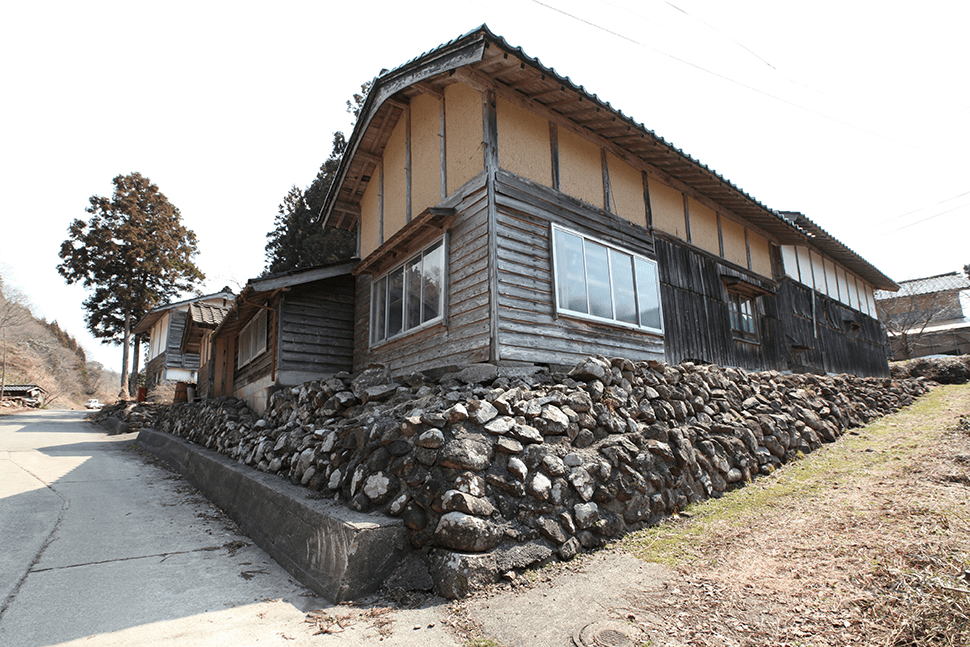
Sasagawa Settlement
Sasagawa Settlement
This is a settlement of people who were involved in placer gold mining. It retains the atmosphere of a mining settlement of the time without significant change in the building layouts and living environment of the time. Large amounts of waste stones left by the “Onagashi” method were used for the foundations of the houses. (Important Cultural Landscape)
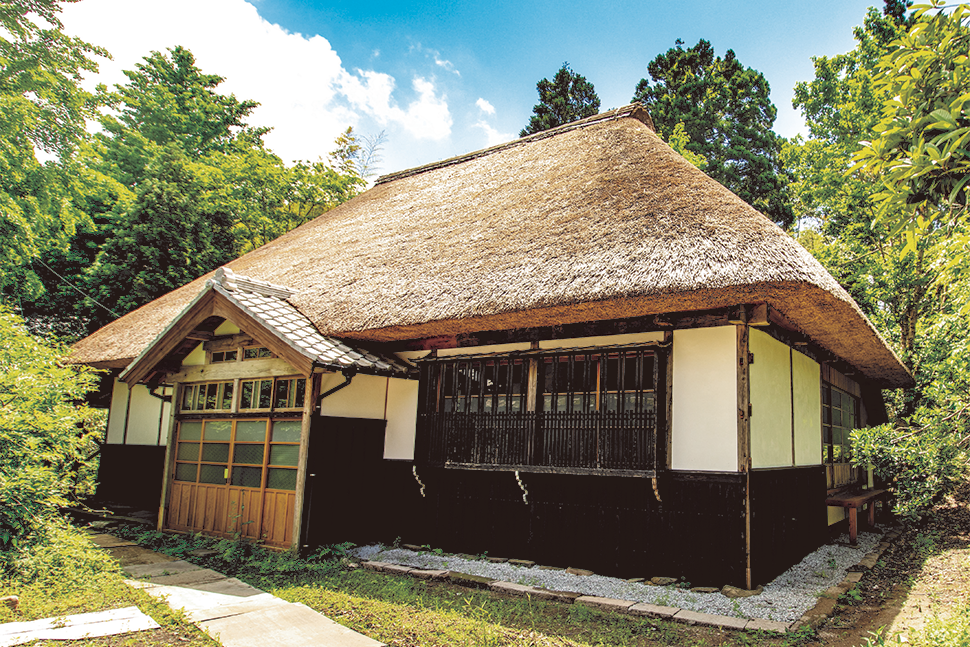
Former Kaneko Kanzaburo House (Photo by Monochrome Niigata)
Former Kaneko Kanzaburo House
The former residence of the Kaneko family, who assembled and managed villagers as a caretaker of the placer gold mine for generations from the late Edo period until the mine closed in 1872. In addition to the main building with its thatched roof built in the 19th century, the storehouse, shed, and cow barn remain to this day. (National Historic Site/Important Cultural Landscape)
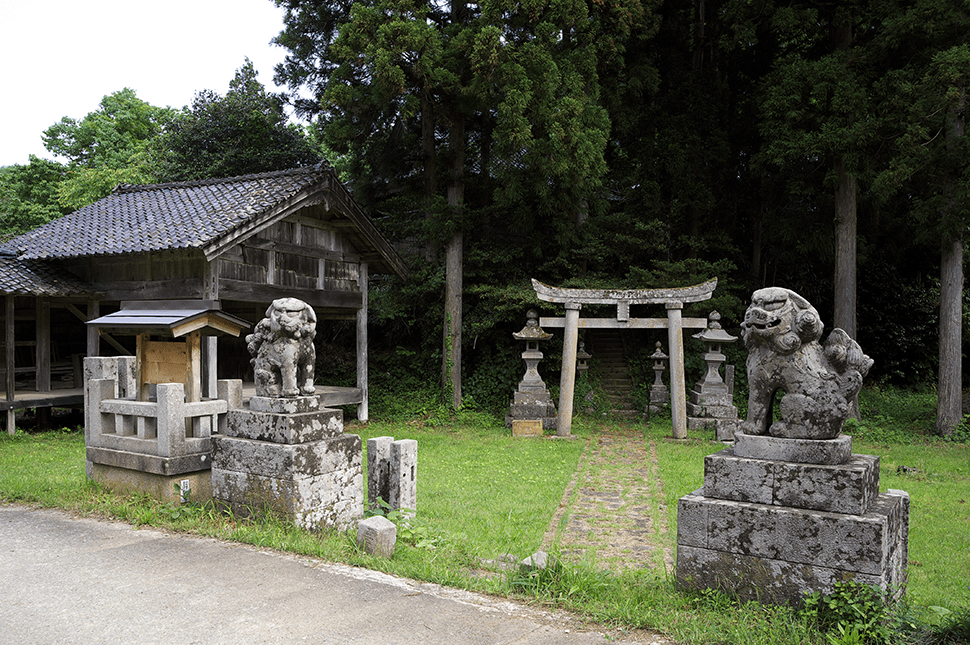
Oyamazumi-jinja Shrine(Photo by Nishiyama Hoichi)
Oyamazumi-jinja Shrine
This shrine was built in 1593 to pray for the prosperity and safety of the placer gold mine. The Noh play stage in the shrine’s precincts was built around the late 19th century, and Noh plays were performed here until the 1950s. Especially on Sado Island, Noh plays were especially popular in the Nishimikawa Area,. While the plays were performed as Shinto rituals, they also served as entertainment for the people of the settlement. (National Historic Site/Important Cultural Landscape)










